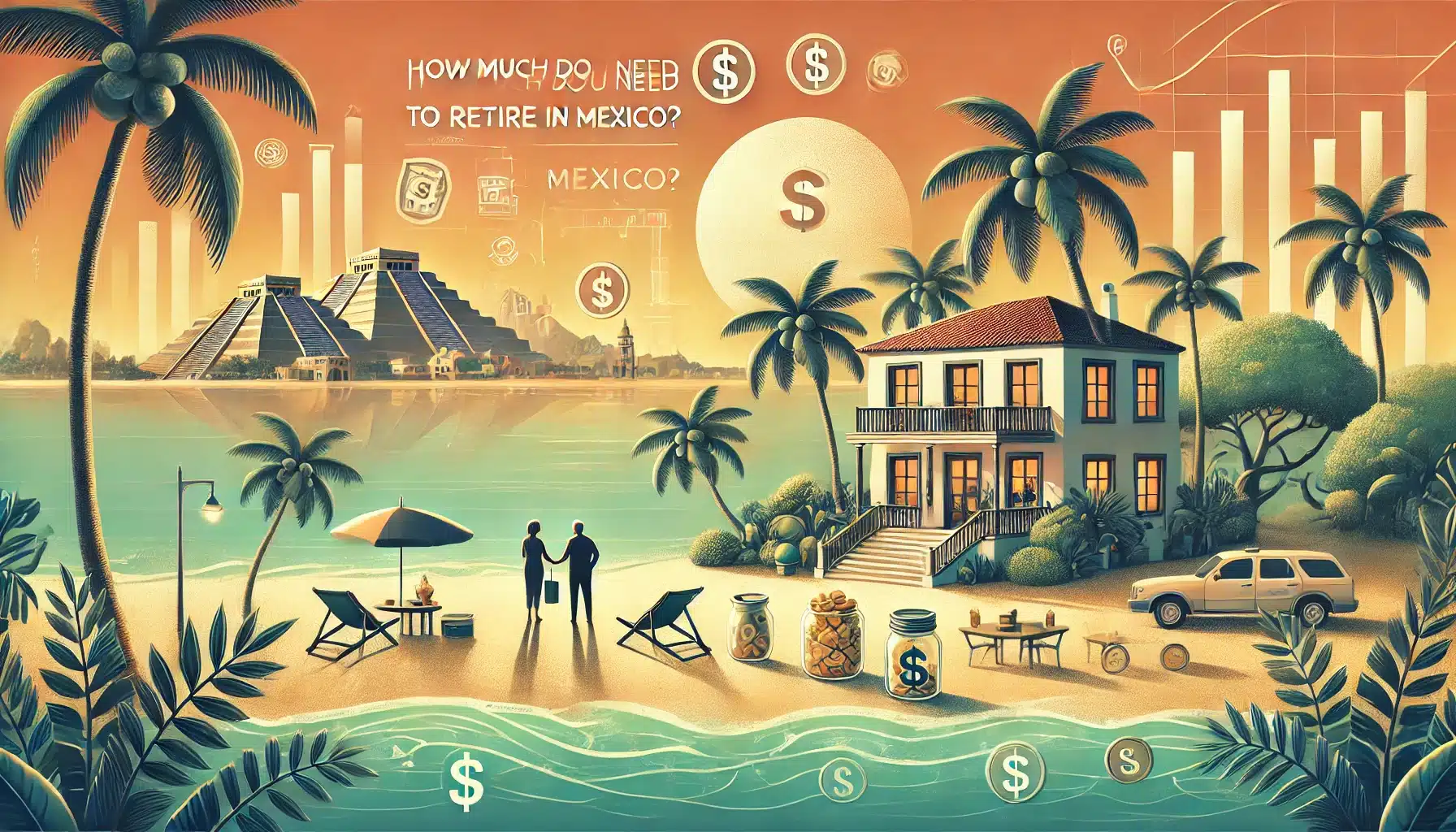How much do you need to retire in Mexico?

The cost of living in Mexico is generally significantly lower than in the United States, making it an attractive destination for expatriates, retirees, and individuals seeking a more affordable lifestyle. Key aspects such as housing, food, healthcare, and transportation are considerably less expensive in Mexico. For example, rental prices in Mexico can be 60–80% lower than in the United States, depending on the location. A one-bedroom apartment in a city center in Mexico might cost between $300 and $700 USD per month, while the same type of accommodation in a major U.S. city could range from $1,500 to $3,000 or more.
Food costs in Mexico are also substantially lower, particularly for locally sourced items like fresh produce, meat, and dairy. Dining out is another area where Mexico is much more affordable; a meal at a mid-range restaurant in Mexico might cost $10–$15 USD per person, whereas in the U.S., the same meal could easily cost $25–$50 or more.
Healthcare in Mexico offers high-quality services at a fraction of the cost compared to the U.S. While the U.S. has one of the highest healthcare costs globally, Mexico’s public and private healthcare systems are accessible and affordable. Private health insurance premiums in Mexico can be as low as $100–$300 USD per month, depending on coverage, which is significantly lower than in the U.S., where premiums often exceed $500–$1,000 for comparable coverage.
Transportation costs, including fuel, public transportation, and car ownership, are generally cheaper in Mexico. Gasoline prices tend to be lower, and public transportation, such as buses and metro systems, is highly affordable, often costing less than $1 USD per ride in major Mexican cities.
Utility costs, including electricity, water, and internet, are also more budget-friendly in Mexico. Monthly utility bills in Mexico are typically around $50–$100 USD, while in the U.S., these costs can range from $150 to $300 or more, depending on location and usage.
However, the overall cost of living comparison depends on individual lifestyle choices, preferences, and the specific regions being compared. For example, living in a major city like Mexico City or Cancún will cost more than living in a rural area, though it will still be less expensive than most metropolitan areas in the U.S. Similarly, U.S. cities have wide variations in living costs, with cities like New York and San Francisco being much more expensive than smaller towns in the Midwest or South.
While Mexico offers a lower cost of living, income levels and purchasing power are generally lower than in the United States. The average salary in Mexico is significantly lower than in the U.S., which means affordability is relative to earnings. For expatriates or retirees living on foreign income or savings, the cost of living in Mexico can represent a substantial improvement in quality of life compared to the United States.
The amount you need to retire in Mexico depends on your lifestyle, location, and spending habits, but generally, Mexico’s lower cost of living makes it possible to retire comfortably on significantly less than what is required in the United States or other developed countries.
For a modest lifestyle in smaller towns or rural areas, retirees may need as little as $1,500 to $2,000 USD per month. This budget typically covers housing, utilities, groceries, healthcare, transportation, and some discretionary spending. If you plan to live in a more popular or urban location, such as Mexico City, Cancún, or San Miguel de Allende, you may need a higher budget, ranging from $2,500 to $4,000 USD per month, depending on the level of luxury and amenities you desire.
Housing is one of the most significant factors affecting retirement costs. Renting a one-bedroom apartment in a city center may cost $300 to $700 USD per month, while outside city centers, rents can be as low as $200 to $500 USD. Purchasing a home is also an affordable option in many parts of Mexico, with property prices significantly lower than in the United States. Owning property can reduce monthly expenses but requires upfront savings or financing.
Healthcare is another critical consideration for retirees. Mexico’s healthcare system is accessible and affordable, with high-quality private care available at a fraction of the cost compared to the U.S. Many retirees opt for private health insurance, which can cost $100 to $300 USD per month, depending on age and coverage. Some retirees choose to use Mexico’s public healthcare system, Seguro Popular or IMSS, for even lower costs, though these systems may involve longer wait times and fewer amenities.
Everyday expenses like groceries, dining out, and transportation are much cheaper in Mexico. A typical grocery bill for one person can range from $150 to $250 USD per month, and dining out at local restaurants is highly affordable, often costing less than $10 USD per meal. Public transportation is efficient and inexpensive, and even owning and operating a car is more affordable than in the United States.
To determine how much you need to retire in Mexico, it is essential to account for variables like travel, hobbies, or specific lifestyle preferences. For instance, retirees who plan to travel frequently, maintain a high standard of living, or live in expat-heavy areas will need a larger budget. On the other hand, those adopting a simpler lifestyle in less touristy regions can retire on less.
A common recommendation for retirees is to have savings or income that supports at least 1.5 to 2 times their estimated monthly expenses to account for emergencies, unexpected costs, or fluctuations in exchange rates. For example, if you plan to spend $2,000 per month, having a secure income or savings of at least $36,000 to $48,000 annually can provide peace of mind.
Retiring in Mexico can be highly affordable, with a comfortable retirement possible on $1,500 to $4,000 USD per month, depending on your lifestyle and location. Careful planning, budgeting, and understanding your personal needs will ensure a secure and enjoyable retirement in Mexico.

Staff
Writer
